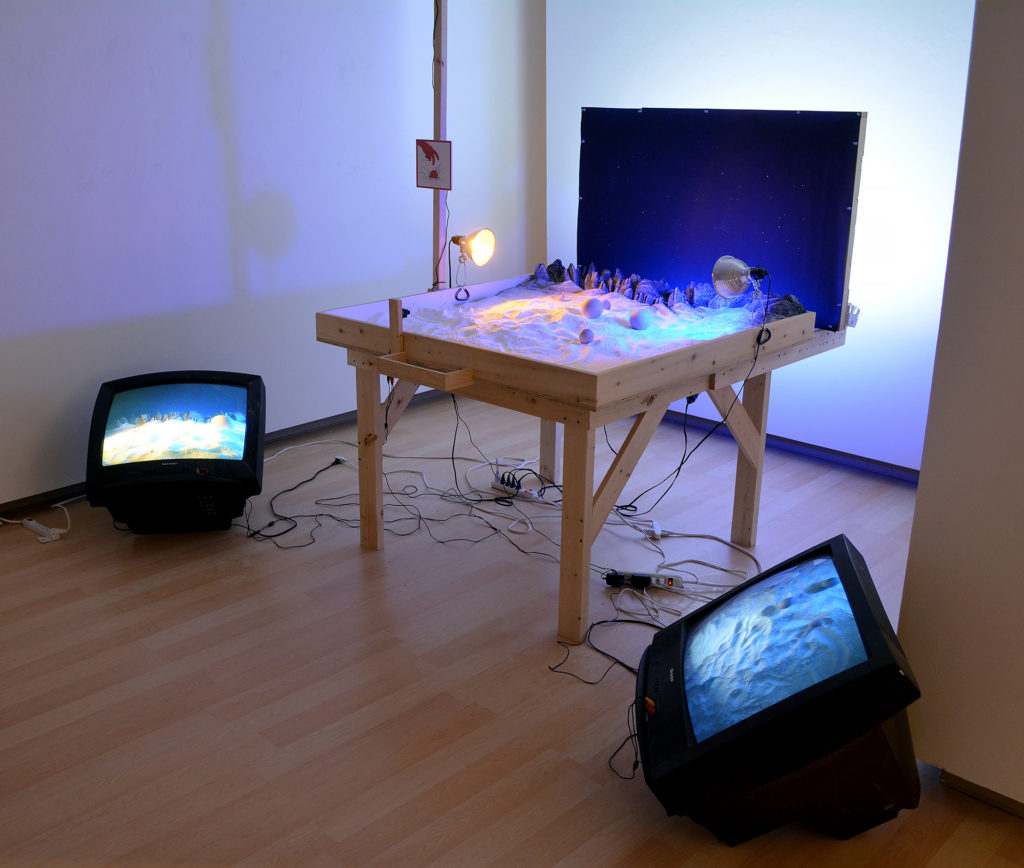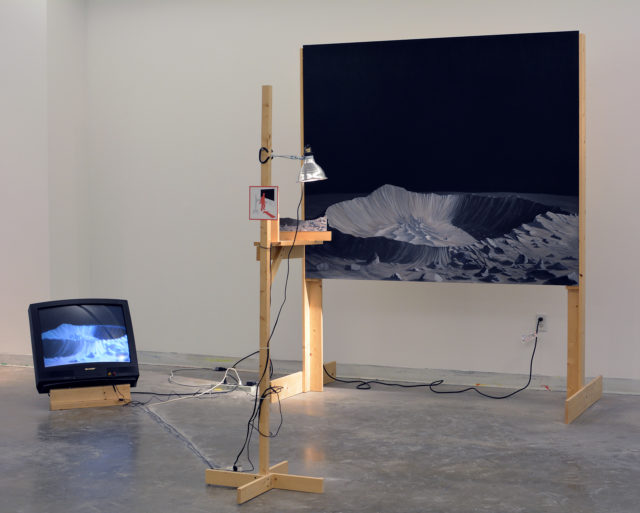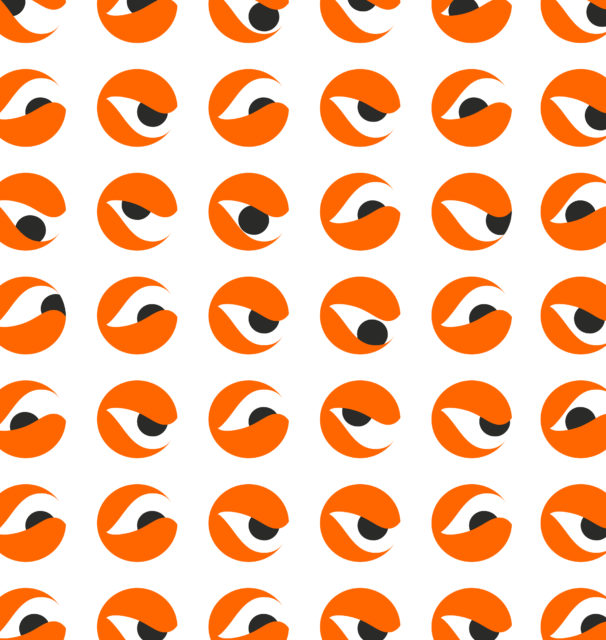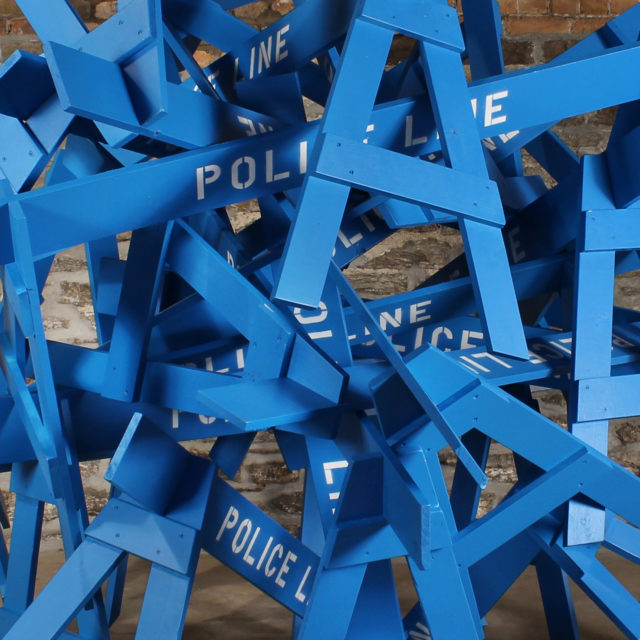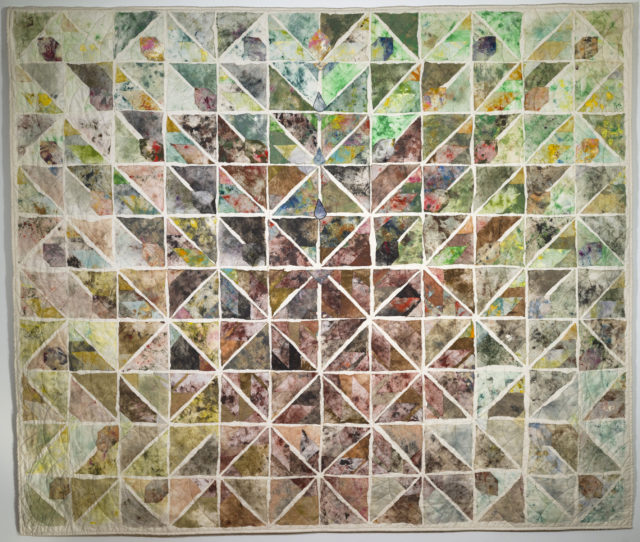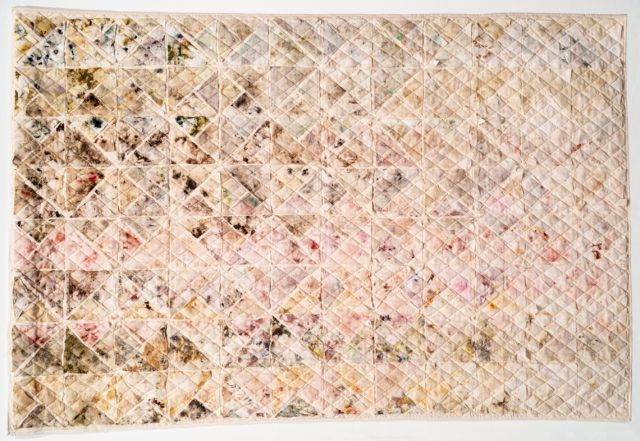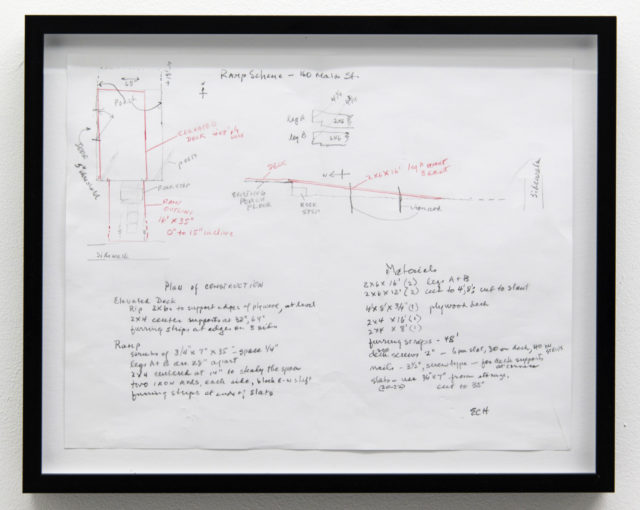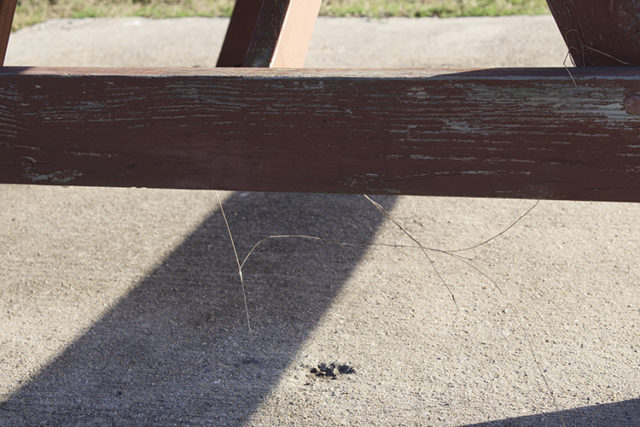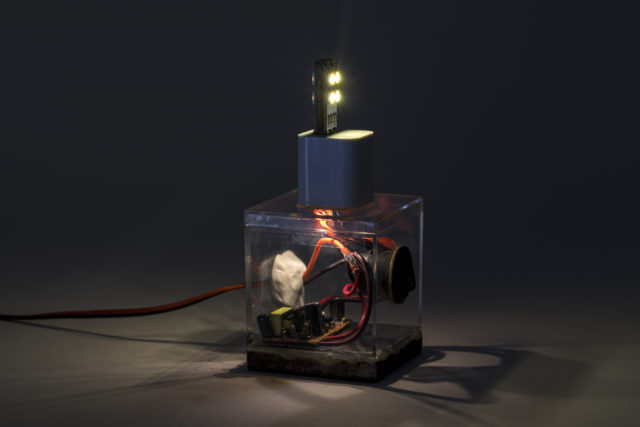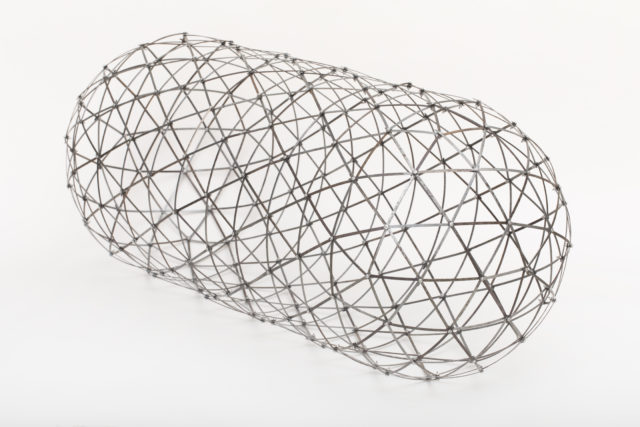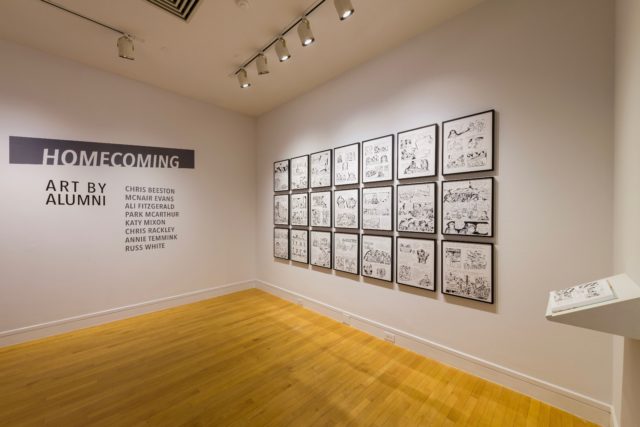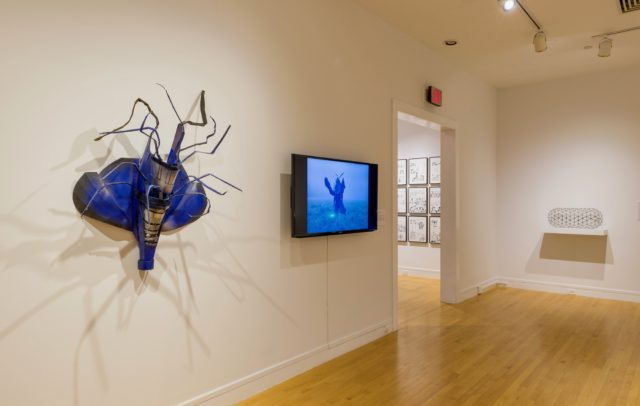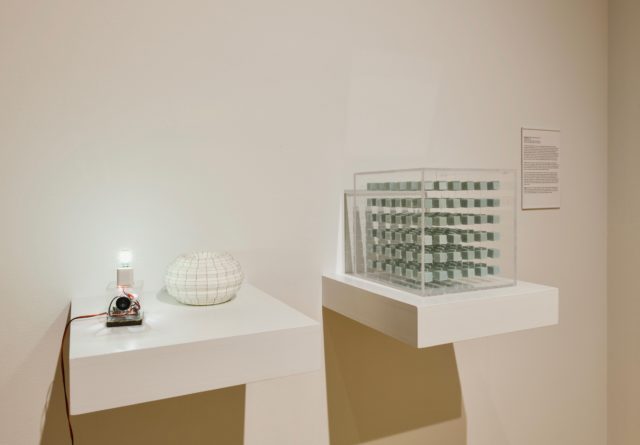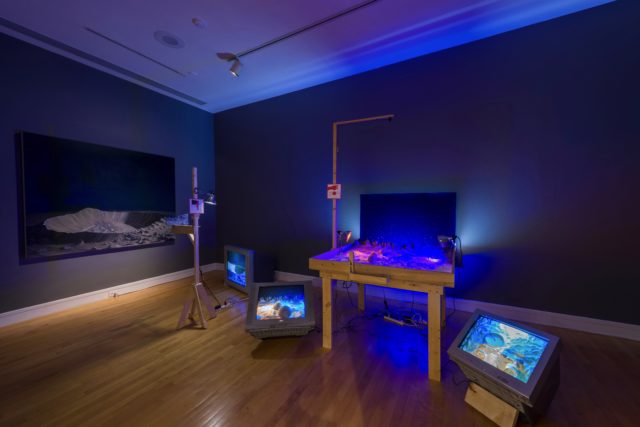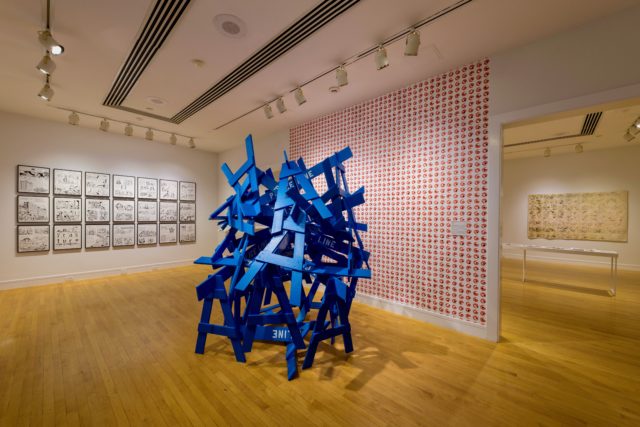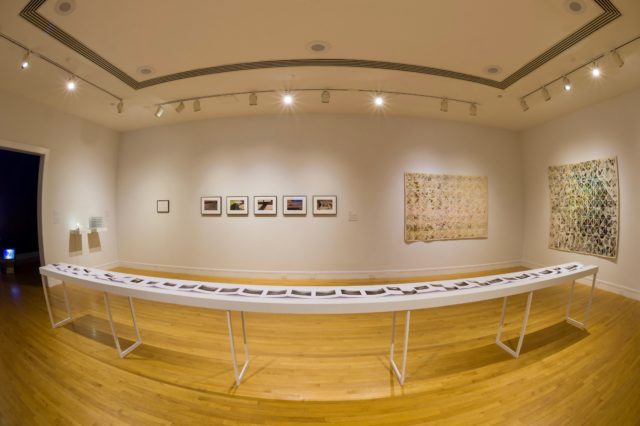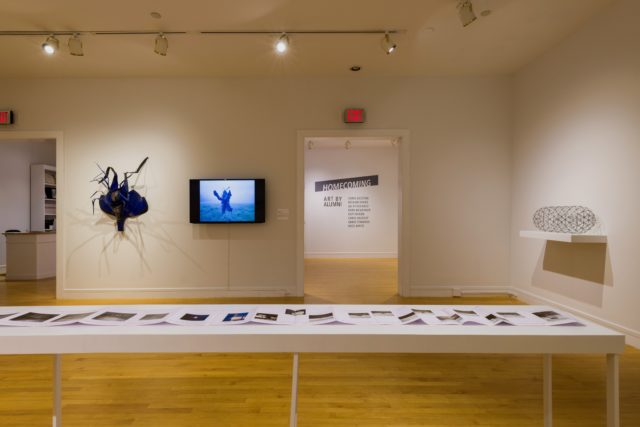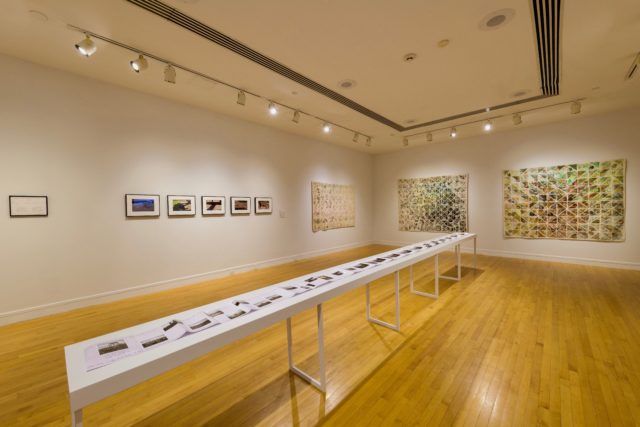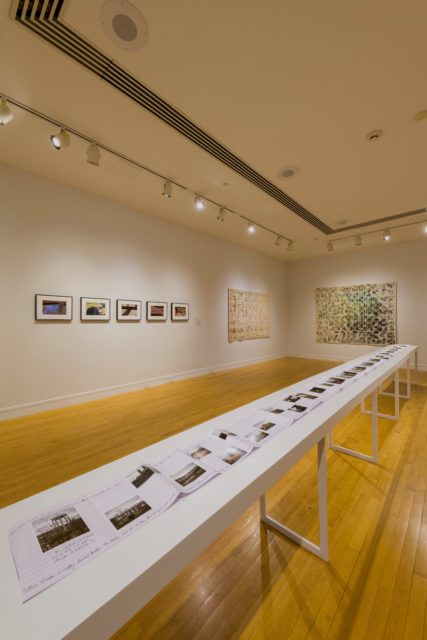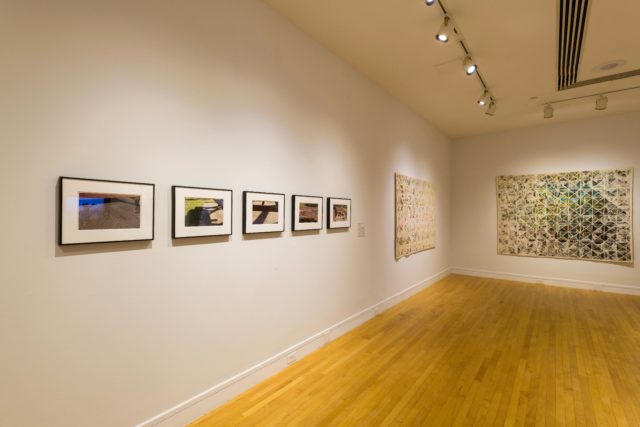Celebrating 25 Years of the Belk Visual Art Center
Homecoming: Art by Alumni
Van Every Gallery
On View: March 14, 2019— April 14, 2019
Opening Reception: March 14, 2019, 7:00 pm— 8:30 pm
Related Programs & Events
Artist Talk
March 14, 2019, 7:00 pm—7:30 pm
Homecoming: Art by Alumni marks the first curated group exhibition featuring Davidson College alumni to appear in the Van Every/Smith Galleries since the opening of the Katherine and Tom Belk Visual Arts Center 25 years ago. In celebration of this significant anniversary, we have selected artworks by eight of the many talented artists who graduated between 1993 and 2018. In our research, these artists stood out for their shared interest in creating work about the human body. Featured artists include Chris Beeston ’08, McNair Evans ’01, Ali Fitzgerald ’04, Park McArthur ’06, Katy Mixon ’06, Chris Rackley ’00, Annie Temmink ’11, and Russ White ’04.
Surprisingly though, there are very few images of actual bodies or people in the exhibition. Instead, you will encounter unique works that allude to the body, such as Russ White’s wallpaper and sculptural installation exploring surveillance and the policing of the body. Titled Police Lines, the wallpaper draws inspiration from Minneapolis Neighborhood Watch signs that White noticed popping up around his neighborhood. The sign depicts a grid of nine placid , orange eyeballs and the phrase, “WATCH FORCE: If I don’t call the police, my neighbor will.” In White’s version, however, the eyeballs are angrier, more suspicious or fearful, darting in every direction, as an indicator of White’s view that “America needs to stop calling the cops on itself.” Police Lines visualizes our fraught relationship with law enforcement. White notes, “any attempts at solving the problems of over-militarized and over-tasked police invariably become tangled in emotion on all sides. The barricades go up, physically overwhelming yet woefully inefficient.”
Park McArthur’s work often depicts the inability of particular social spaces to accommodate all bodies, including her own. For example, Ramp Scheme 160 Main Street presents a detailed plan drawn by the artist’s grandfather for the construction of a ramp he ultimately built to facilitate McArthur’s entry into a friend’s residence. Her photographic series, Overlook Park 1-5, depicts a picnic table in a public space that is not compliant with the requirements of the Americans with Disabilities Act. Encircling the table with her wheelchair, McArthur illuminates the utter inaccessibility of a space meant for congregation and participation. The apt title conflates the site of the photographic series with the artist’s name and her personal feelings of disregard or neglect.
Ali Fitzgerald’s graphic novel, Drawn to Berlin, also illuminates issues of identity and displacement, in this case specific to the artist’s experience teaching comics to asylum seekers in a refugee shelter in Berlin. Excerpts from her novel depict a situation that is at once dire and profound, filled with moments of disillusionment, uncertainty, and loss, as well as hope, trust, and compassion. One of the strengths of Fitzgerald’s graphic novel is the way she weaves in historical information, illuminating connections between today’s migrants and those from the 1920s, as well as visual indicators of the rise of far-right nationalism, including through the return of Fraktur, a font once favored by the Nazis.
Chris Rackley is working simultaneously on two bodies of work, paintings and contraptions. Works such as Walk in Crater conflate the two practices, making use of an oil painting backdrop within his interactive works that often place the viewer at the center via live, closed-circuit video. Rackley finds inspiration in special effect tricks, scale models, fake realities, science fiction films, and landscape paintings that evoke wonder, though he is uneasy about models, arguments, or theories – scientific, theological, or otherwise – that claim to make sense of everything. His works on view in Homecoming reinforce his goal to create experiences that fall somewhere between campy and sublime.
Chris Beeston is also inspired by science fiction, as well as scientific and technical knowledge. He gathers bits of scrap metal and other objects from the streets of New York, including street sweeper bristles such as those assembled into Capsule (Street Sweeper Bristles). His knack for repairing electronics is evident in Lamp 5 and other works in which he transforms found items, such as paper, Tupperware, and empty pill bottles, into new objects. Though he notes the work is often about ignoring the body, there is an obvious relationship between the discarded, mass-produced, household objects that comprise his sculptures and the humans who make, buy, utilize, and eventually, throw these items away. Further, the meticulous, intricate assemblages allude to the artist’s hand and mind; wonder, planning, calculation, dexterity, patience, and craftsmanship are all visualized through objects that ultimately are greater than the sum of their parts.
Katy Mixon also makes use of discarded objects to create works such as A Limp Truce, Plucked, and Sprinkle. Utilizing used hand rags from her own painting practice Mixon recycles them into new, large-scale works much like the scrap-fabric quilts that inspired them. Mixon’s hand is evident in the creation of the patterns on the rags, made through the gesture of wiping and wringing, as well as in the gesture of embroidery and construction of the quilts. The artist compares her process to agriculture: harvested scraps from previous works are grafted onto new substrates, as seeds to germinate new works. Crops of kaleidoscopic color, pattern, and form emerge as the pieces grow.
Annie Temmink similarly utilizes recycled materials, in her case cardboard and fabric, to create her costumes, headwear, and accessories, often with the goal of movement through performance. Blue Beast is the first in a series of experiments where the costumed figure is meant to depict an inner feeling. The accompanying performative video illustrates how this feeling might manifest if the beast is let loose.
McNair Evans’s project, The Cardinal, southbound 161217, visualizes the artist’s 18-hour Amtrak train ride from Chicago to Grand Central Terminal in New York. The 33-page accordion-folded work is displayed unfurled, a presentation that requires the viewer to physically move through space to experience the work, 255 inches in length. The continuous linear form presents portraiture, the fleeting landscape, and the lyrics of 19th-century railroad ballads in an effort to trace class division, industrialism, and railroads across multiple generations.
Homecoming: Art by Alumni is an example of the incredible, diverse work being produced by just a small sampling of the talented artists who have passed through the Katherine and Tom Belk Visual Arts Center over the past twenty-five years. We are delighted to share these works with you and look forward to highlighting the accomplishments of more of our alumni in future iterations of Homecoming.
View the exhibition catalog below.

